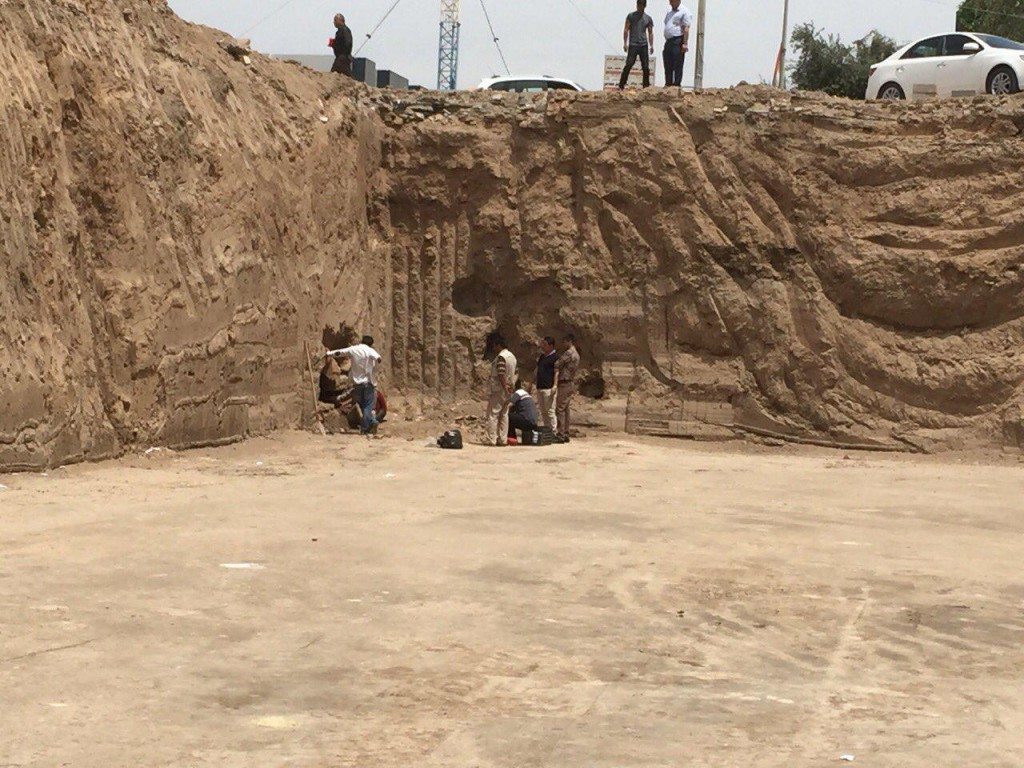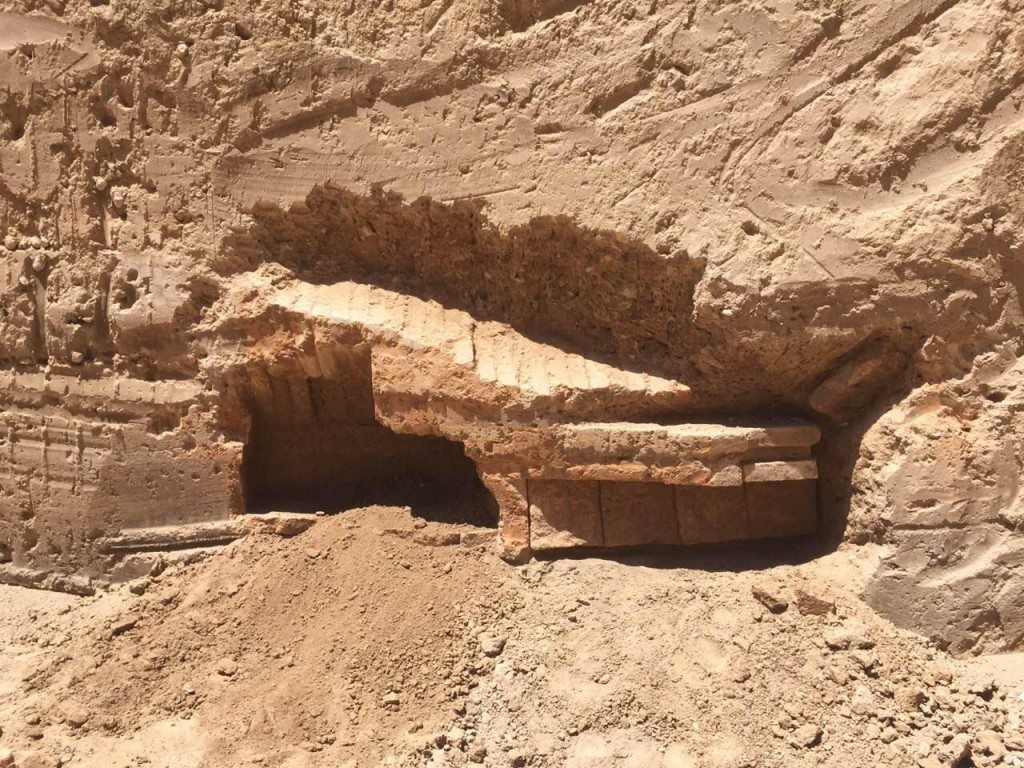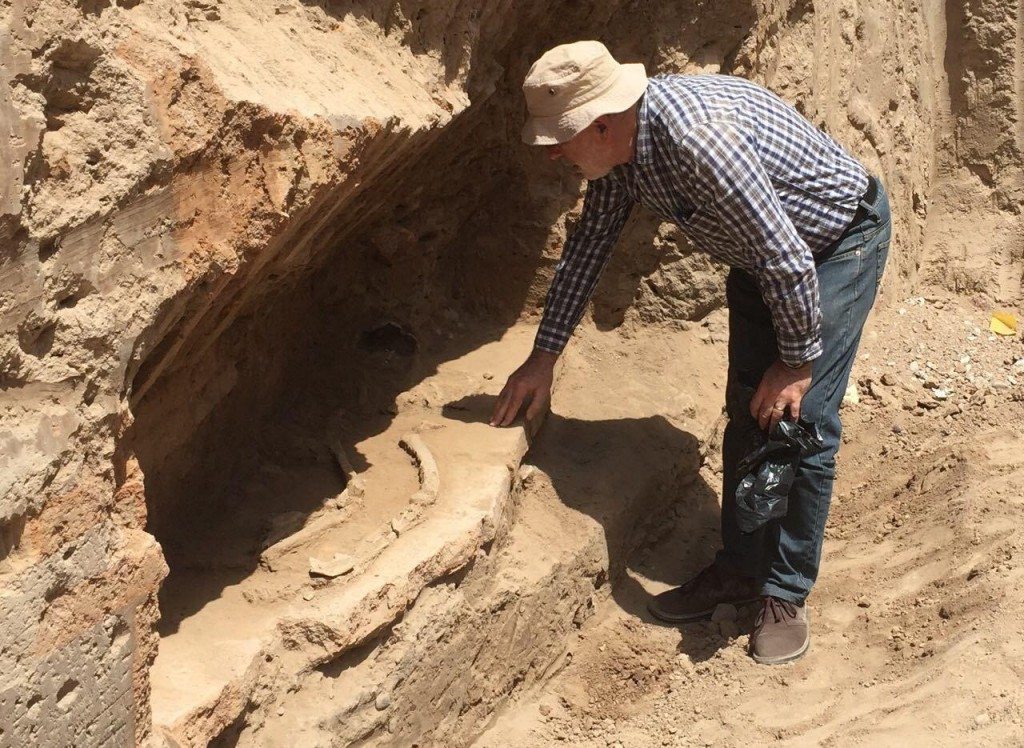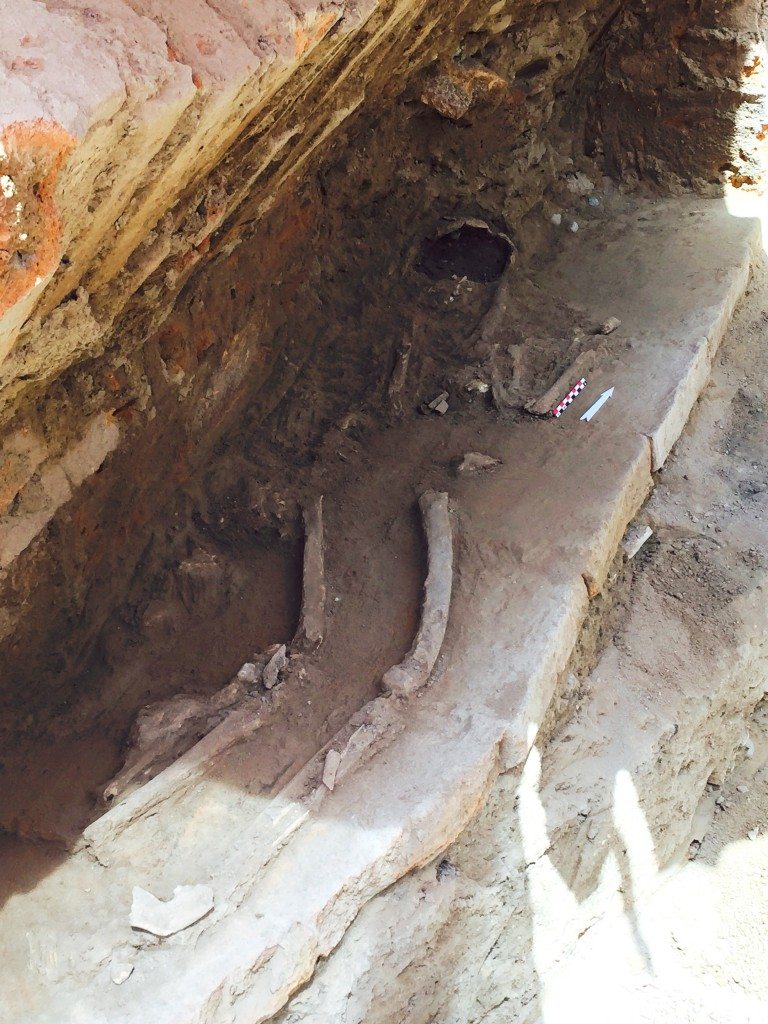An archaeologist friend of mine once told me: “Less than 5% of the Mesopotamian history has been found, and wherever you dig, anywhere in the land of Mesopotamia, you will discover something.”
This story comes from Erbil (Hawler) Governorate. About 100-200 m away from the Citadel of Erbil (Arabic: قلعة أربيل; Kurdish: قهڵای ههولێر), an old house with a large garden was sold to an investment company. The company demolished the house and started to dig the foundation of a large building in late April 2015.
In response to my questions, Architectural Engineer Sarbast Mahmood Ahmed replied:
We were working 24/7. It was around 10 PM when we were digging the foundation of the building. The caterpillar excavator had reached 6 m in depth. Suddenly, one of the workers noticed that the machine had removed earth in addition to bricks. We stopped digging. After sunrise, we saw that we had unearthed what appeared to be a grave. Part of the grave was damaged while we were digging. Immediately, we informed the General Directorate of Antiquities. A specialized team arrived after a few hours and they prohibited us from further work. They did a short-lived excavation work within a few days together with a French archaeological team. The grave contained the skeleton of a human body. It seems that the corpse was laid on its left side. Nothing else was in the grave, no pottery or gold. The French team took the skeleton allowing for construction work to continue. I have been told that the skeleton was transferred to France using a private airplane. One of the team members told me that the unearthed grave dates back to the neo-Assyrian period. But I do not know whether the skeleton was a male or a female, an adult or a teen.
The images show that the grave has a narrow floor and a triangular roof. Who was inside the grave? How old was this person? Why were there no grave goods (food, pottery, cursing text, gold, silver etc.)? What did the surrounding area look like 3000 years ago?
Many thanks go to my dear friend, Dr. Ahmed Imaddidin Omar, who informed me about this discovery and provided me with the preliminary images of the site as well as the contact details of Mr. Sarbast. I’m very grateful to Engineer Sarbast Mahmood for his kind cooperation and the wonderful pictures of the grave. All pictures in this article are courtesy of Mr. Sarbast Mahmood Ahmed.
This is the land of Mesopotamia, the cradle of civilization! It never dies! If ISIS destroys “something”, we will continue unearthing many more “somethings”.

General overview of the location. This was a garden of an old demolished house. The foundation of the new building was almost complete. A depth of 6 m has been reached. The grave can be seen near the corner, as a pit inside a wall. Photo © Osama S. M. Amin.

Part of the grave was damaged by the caterpillar excavator. The archaeological team has started its work on the grave. Photo © Osama S. M. Amin.

The archaeological team has removed one of the walls of the grave. The skeleton has not appeared yet. Photo © Osama S. M. Amin.

A member of the French archaeological team examines the skeleton inside the grave. The left side of the grave has been completely removed. Photo © Osama S. M. Amin.

The skeleton is clearly visible. The corpse was originally laid on its left side. There are no pottery or precious materials inside the grave. Photo © Osama S. M. Amin.

The skeleton was removed and transferred to a research lab in France. Note the arrangement of the bricks of the walls and the triangular roof. The grave dates back to the Neo-Assyrian period, 911-609 BCE. Photo © Osama S. M. Amin.
Disclaimer:
Erbil (or Hawler) Governorate lies within the northern area of Iraq and is part of Iraqi Kurdistan (or Kurdistan Region or Southern Kurdistan). All of these terms are used to describe the region. Neither the author nor Ancient History Encyclopedia endorses any specific term of the aforementioned ones.